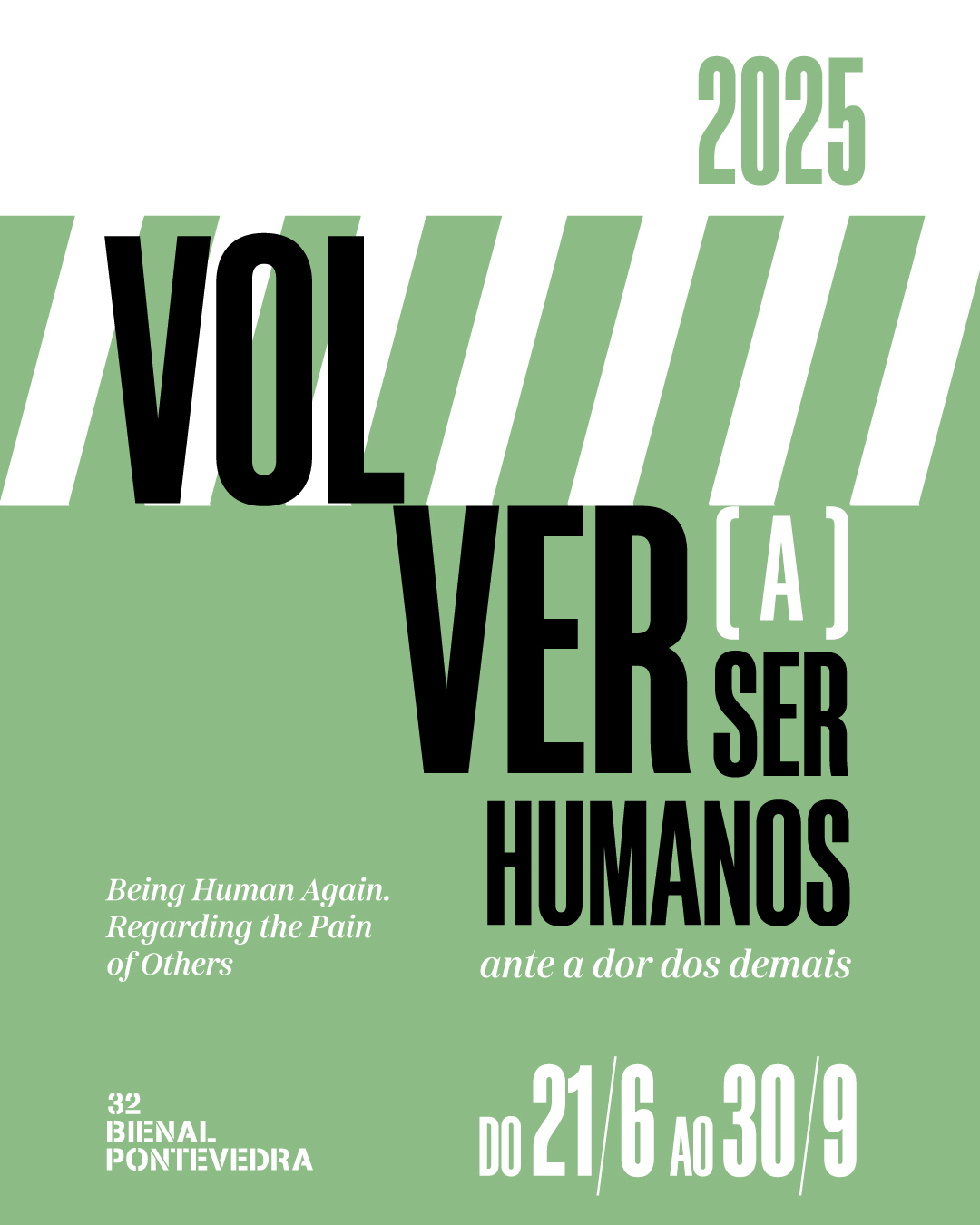Being Human Again - Bienal de Pontevedra

Being Human Again
'True humanist culture is the one that teaches us to live in harmony with ourselves, with others and with the world…
The art of being human is a call to serve life, to stop hatred and fear'
Rob Riemen
'War tears, rends. War rips open, eviscerates. War scorches. War dismembers. War ruins'
Susan Sontag
The history of mankind has been shaped by war, a phenomenon that has had a deep impact on our collective identity. In present-day conflicts, such as the one in Russia and Ukraine, or the confrontations in Gaza, Lebanon, Sudan or Mali, violence is still affecting millions of people. The 32nd Pontevedra Art Biennial addresses these issues, analysing wars not only as military combats, but also as crises destroying the social, emotional and economic structure of societies. Inspired by thinkers like Rob Riemen and Susan Sontag, the exhibition suggests that, in order to overcome these conflicts, human beings must 'be human again', recovering their ability to be reflective and empathetic. Through art, spirituality and imagination, it seeks to give hope and to encourage collective reflection and healing.
Thus, art, spirituality, magic and imagination are presented as essential tools to rebuild what war has been trying to destroy. Through metaphors, symbols and alternative stories, the event is aimed at building bridges between different human experiences, between the borders of the visible and the invisible, the real and the imaginary. Its purpose is to create a glimmer of hope so that people can find themselves again and rebuild a future where war is not their destiny, but the emergence from darkness through light, love and truth. If we could be human again, if we could recover our memories and deep understanding, then we could achieve a world in which war is not the answer, but a reminder of a crisis that taught us how important it is to be human. Going beyond wars, this 'being human again', stated by Riemen as a response to conflicts, places us in the counterpoint between humanism and posthumanism, which is the starting and ending point of the exhibition.
In ten different spaces scattered throughout the town, the Biennial proposes a mixture of diverse voices and languages and fosters a dialogue between violence and peace, migrations and exiles, as well as between the darkness of war and the light of hope. More than sixty artists from various countries, including some from conflict areas, will take part with works dealing with themes such as spirituality, love, tolerance, truth and utopia. The exhibition begins with The Disasters of War, by Goya, a series which lays the foundations for exploring human suffering and the forms of resistance against violence. In the Biennial, contemporary works approaching war from different perspectives and using metaphors and symbols invite us to reflect on how to recover our humanity through art, memory and thought. And beyond war, his response, 'Being human again', in its purest essence – humanism –, not only promotes a vision of the world, but aims to transform our relationship with the universe into a harmonious dance among all beings and their environment. This proposal goes beyond the individual person, advocating an education that spiritually nourishes and fully develops the human being, both in their contact with transcendence and everyday life. On a diametrically opposed spectrum, transhumanism represents an attempt to transcend our biological limitations through technology, using tools such as artificial intelligence and biotechnology to reshape our nature, modifying our physical and mental capacities with the promise of a better future.
Both movements, in spite of having different approaches, are built upon the values of the Enlightenment, such as knowledge and progress, but their perspectives differ radically. While humanism has a holistic view, based on spirituality and ethics, transhumanism is focused on a future based on science and technology. Memory and tradition are foundations shared by these two movements, but addressed from opposed perspectives: humanism looks to the past in search of moral values and a friendlier relationship with nature, while transhumanism, in its search for technological solutions, tries to envisage a future in which sustainability and ecology are considered problems that need to be solved through technical innovation.
X. Antón Castro
Agar Ledo

